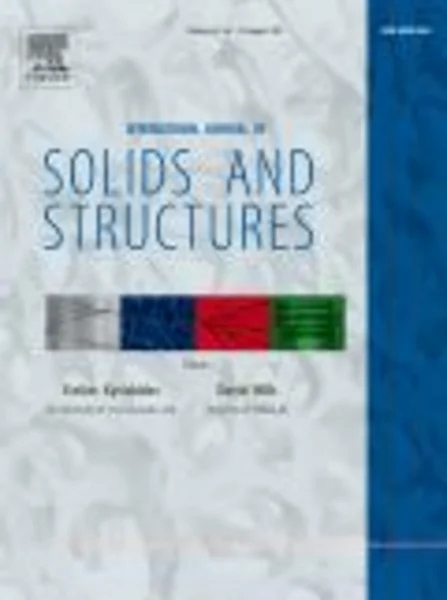-
structural solution using molecular dynamics: fundamentals and a case study of epoxy-silica interface
جزئیات بیشتر مقاله- تاریخ ارائه: 1392/01/01
- تاریخ انتشار در تی پی بین: 1392/01/01
- تعداد بازدید: 790
- تعداد پرسش و پاسخ ها: 0
- شماره تماس دبیرخانه رویداد: -
in this paper, the molecular dynamics (md) simulation technique is described in the context of structural mechanics applications, providing a fundamental understanding of the atomistic approach, and demonstrating its applicability. atomistic models provide a bottom-up description of material properties and processes, and md simulation is capable of solving the dynamic evolution of equilibrium and non-equilibrium processes. the applicability of the technique to structural engineering problems is demonstrated through an interface debonding problem in a multi-layered material system usually encountered in composite structures. interface debonding may lead to a possible premature failure of fiber reinforced polymer (frp) bonded reinforced concrete (rc) structural elements subjected to moisture. existing knowledge on meso-scale fracture mechanics may not fully explain the weakening of the interface between concrete and epoxy, when the interface is under moisture; there is a need to study the moisture affected debonding of the interface using a more fundamental approach that incorporates chemistry in the description of materials. the results of the atomistic modeling presented in this paper show that the adhesive strength (in terms of energy) between epoxy and silica is weakened in the presence of water through its interaction with epoxy. this is correlated with the existing meso-scale experimental data. this example demonstrates that md simulation can be effectively used in studying the durability of the system through an understanding of how materials interact with the environment at the molecular level. in view of the limitation of md simulation on both length- and time-scales, future research may focus on the development of a bridging technique between md and finite element modeling (fem) to be able to correlate the results from the nano- to the macro-scale.
مقالات جدیدترین رویدادها
-
استفاده از تحلیل اهمیت-عملکرد در ارائه الگوی مدیریت خلاقیت سازمانی و ارائه راهکار جهت بهبود
-
بررسی تاثیر ارزش وجوه نقد مازاد بر ساختار سرمایه شرکت های پذیرفته شده در بورس اوراق بهادار تهران
-
بررسی تأثیر سطح افشای ریسک بر قرارداد بدهی شرکت های پذیرفته شده در بورس اوراق بهادار تهران
-
بررسی تأثیر رتبه بندی اعتباری مبتنی بر مدل امتیاز بازار نوظهور بر نقد شوندگی سهام با تأکید بر خصوصی سازی شرکت ها
-
تأثیر آمیخته بازاریابی پوشاک ایرانی بر تصویر ذهنی مشتری پوشاک ایرانی (هاکوپیان)
-
بررسی پترولوژیکی و ژئوشیمیایی سنگ های ولکانیکی میوسن شمال خروانق - شرق دستجرد
-
استخراج تایمینگ متغیر بهینه برای موتور چهارسیلندر xu7
-
یک الگوریتم جدید موازی جستجوی اول سطح با استفاده از پردازنده گرافیکی
-
بررسی عملکرد یک موتور اشتعال تراکمی مخلوط همگن با سوخت هیدروژن
-
the impact of online teaching on esl student’s academic grammar proficiency during post-covid
مقالات جدیدترین ژورنال ها
-
مدیریت و بررسی افسردگی دانش آموزان دختر مقطع متوسطه دوم در دروان کرونا در شهرستان دزفول
-
مدیریت و بررسی خرد سیاسی در اندیشه ی فردوسی در ادب ایران
-
واکاوی و مدیریت توصیفی قلمدان(جاکلیدی)ضریح در موزه آستان قدس رضوی
-
بررسی تاثیر خلاقیت، دانش و انگیزه کارکنان بر پیشنهادات نوآورانه کارکنان ( مورد مطالعه: هتل های 3 و 4 ستاره استان کرمان)
-
بررسی تاثیر کیفیت سیستم های اطلاعاتی بر تصمیم گیری موفق در شرکتهای تولیدی استان اصفهان (مورد مطالعه: مدیران شرکتهای تولیدی استان اصفهان)
-
مطالعه تطبیقی نفقه زوجه در آموزه های قرآن کریم و قانون مدنی افغانستان
-
واکاوی تجارب زیسته مدیران آموزشی از چالش ها و موانع توسعه صلاحیت حرفه ای
-
سیره اقتصادی امام علی (علیه السلام) در الگوی تولید و مصرف مدبرانه
-
راهکارهای درمان پرخاشگری از دیدگاه قرآن و روایات
-
the impact of resistance economic policies on the reduction of cases that have been rejected and the tax gap in businesses




سوال خود را در مورد این مقاله مطرح نمایید :